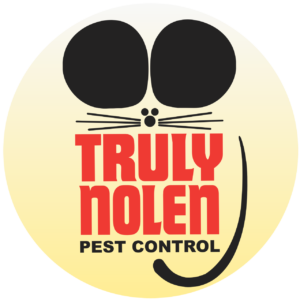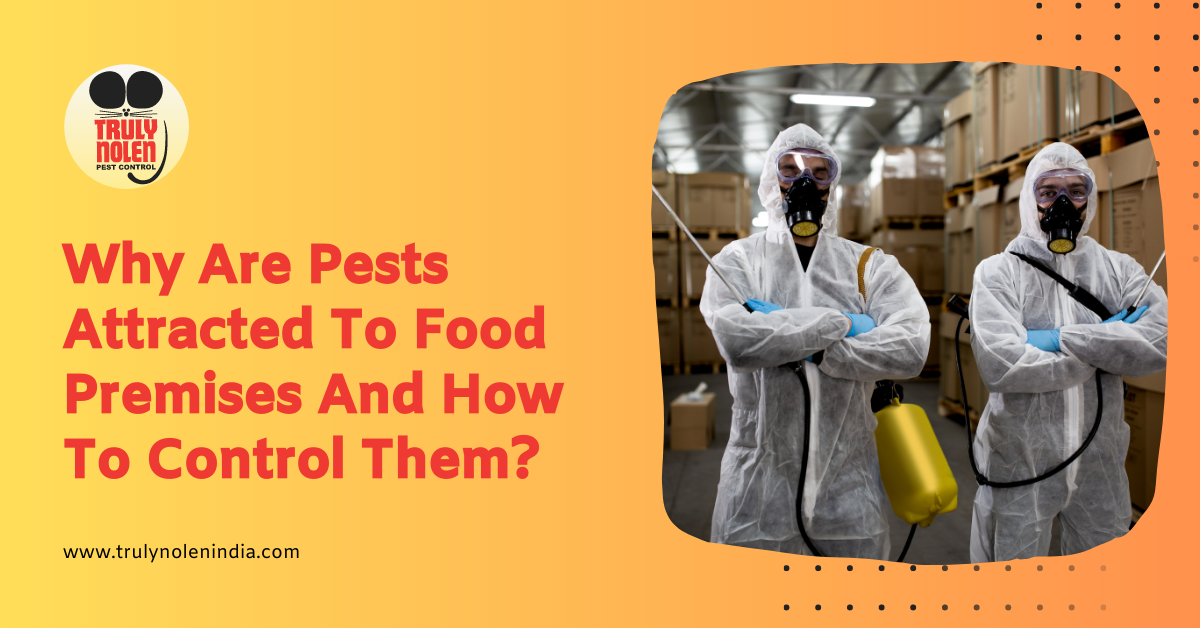Imagine you own a small bakery in a bustling neighborhood. You take pride in using only the finest ingredients and maintaining a clean and hygienic kitchen.
Lately, though, you’ve noticed something not so pleasant: pests invading your food premises. Flies buzzing around your fresh pastries, ants crawling across your countertops, and mice scurrying in your storage area. It’s definitely not the kind of bakery atmosphere you had in mind.
A food premise is like a buffet for them – an open invitation for pests to feast.
So, why are pests so attracted to food premises? That’s what we are about to find out.
In this blog, we will understand why pests are attracted to food premises and how to control them.
Let’s get started.
Which Places Are Most Likely To Be Infested By Pests?
As we embark on understanding why are pests attracted to food premises, let’s understand which parts of the food premises are frequented by pests:
- Storage areas: Pests are attracted to stored food and the warm, dark environments in storage rooms or pantries.
- Kitchen and food preparation areas: These areas provide ample food and water sources for pests.
- Garbage and waste disposal areas: Accumulated food waste and garbage can attract pests.
- Dining areas: Crumbs and spills left behind by customers can attract pests if not promptly cleaned.
- Entry points: Cracks, gaps, and open doors/windows serve as entry points for pests, allowing them to infest various areas within the premises.
Plumbing and drainage systems: Moisture-rich environments in and around pipes and drains can provide breeding grounds for pests.
Unwanted Guests: Understanding The Attraction Of Pests To Food Premises

Let us delve into the type of pests in food establishments, why they’re so drawn to these places, and the troubles they cause:
Stored product pests
Examples: Beetles, weevils, moths, mites
Why are they attracted to food premises?
Stored Product pests are irresistibly drawn to food premises due to the abundance of stored grains, cereals, dried fruits, and pantry staples. They find their way through contaminated ingredients or packaging, seeking these valuable food sources.
Signs of infestations
To spot the presence of Stored Product pests, keep an eye out for telltale signs such as damaged packaging with holes, the presence of webbing or silk-like material, the discovery of cocoons or pupae, or the sight of larvae crawling within food containers.
Troubles they cause
The invasion of Stored Product pests can bring significant troubles to food establishments. These pests contaminate food products with their eggs, excrement, and dead bodies, resulting in spoilage and financial losses. Moreover, the mere presence of infestations can damage the reputation and trust of the business among customers.
Rodents
Examples: Rats, mice
Why are they attracted to food premises?
Rodents are irresistibly attracted to food premises due to the easy availability of food, water, and shelter. These resourceful creatures can effortlessly squeeze through small openings and are notorious for their ability to gnaw through packaging, making food establishments an ideal haven for them.
Signs of infestations
To identify rodent infestations, be on the lookout for key indicators such as droppings, which resemble small pellets, gnaw marks on food packaging or structures, tracks or footprints, or burrows in and around food storage areas.
Troubles they cause
Rodents pose significant health risks as they contaminate food with their urine, droppings, and hair, potentially leading to foodborne illnesses. Moreover, their incessant gnawing habits can cause extensive damage to structures, electrical wiring, and equipment, increasing the risk of fire and other safety hazards.
Cockroaches
Examples: American cockroach , Brown-banded cockroach, Oriental cockroach
Why are they attracted to food premises?
Cockroaches are irresistibly drawn to food premises due to the abundance of food sources available. These resourceful pests can easily find crumbs, grease, and organic debris that serve as their nourishment. Additionally, they are naturally attracted to warm and humid environments, making food establishments an ideal habitat for them.
Signs of infestations
To detect cockroach infestations, be on the lookout for specific signs. Keep an eye out for cockroach droppings, which resemble tiny black specks or coffee grounds, and egg casings (known as ootheca) found in hidden corners or crevices. An unpleasant, musty odor may also be present in areas with significant infestations.
Troubles they cause
Cockroaches are carriers of various diseases and can contaminate food and surfaces they come into contact with. This poses a significant health risk to both customers and employees. Furthermore, cockroaches in food establishments can harm the business’s reputation, leading to customer dissatisfaction and potential health code violations.
Flies
Examples: House flies, fruit flies
Why are they attracted to food premises?
Flies are irresistibly attracted to food premises due to the abundance of exposed food, decaying matter, and warm environments. These factors provide ideal conditions for flies to thrive. They can quickly enter food establishments through open doors, windows, or even small gaps and cracks.
Signs of infestations
To detect fly infestations, observe increased fly activity within the premises. Pay attention to their presence near garbage areas or places where decaying matter accumulates. The presence of fly larvae, commonly known as maggots, can also indicate an infestation.
Troubles they cause
Flies can pose significant troubles when present in food premises. They can transmit diseases as they come into contact with various sources of pathogens. By landing on food and surfaces, flies can contaminate them, making them potential carriers of harmful bacteria and viruses. Flies can create an unsanitary and unpleasant environment for customers and employees alike.
Ants
Examples: Fire ants, black ant, Yellow crazy ant.
Why are they attracted to food premises?
Ants are irresistibly drawn to food premises, constantly searching for food and water sources. They can follow scent trails left by other ants, enabling them to locate potential food sources. Additionally, ants are particularly adept at detecting sweet and greasy substances, making food establishments a prime target for their foraging activities.
Signs of infestations
To identify ant infestations, watch for ant trails, which are lines of ants moving back and forth between their nest and food sources. Look for small piles of food debris near cracks or crevices where ants may be entering. Nests, which can be found in nearby areas, may also indicate an infestation.
Troubles they cause
Ants can cause multiple troubles when present in food premises. They can contaminate food, making it unsuitable for consumption. The presence of ants can also be a nuisance to customers, potentially leading to dissatisfaction. Certain ant species, such as carpenter ants, can cause structural damage by excavating nests in wood, leading to potential structural instability.
How To Control Pests In Food Premises?

Controlling pests in food premises is crucial to maintain a clean and safe environment for food preparation and storage. Here are 10 practical tips to help you effectively manage and prevent pests from infesting your food establishment:
- Keep it clean and tidy
Maintain a high level of cleanliness by regularly cleaning and sanitizing all areas, including floors, countertops, and storage spaces. Remove any food debris or spills promptly to eliminate attractants for pests. - Seal entry points
Inspect your premises for gaps, cracks, or holes pests can use to enter. Seal these entry points with caulk or weatherstripping to prevent pests from infiltrating your establishment - Proper waste management
Dispose of garbage properly and regularly. Keep trash cans tightly sealed and place them away from food storage and preparation areas. Clean the bins frequently to prevent odor and attraction to pests. - Store food properly
Use sturdy, sealed containers to store food items, ingredients, and supplies. Ensure that containers are tightly closed to prevent pests from accessing them. Consider using a first-in, first-out (FIFO) system to minimize the chances of food spoiling and attracting pests. - Regular inspections
Implement a regular inspection schedule to identify signs of pest activity early. Check for droppings, gnaw marks, or nests, and take immediate action if any pests are found. Early detection is critical to preventing infestations. - Maintain proper ventilation
Good airflow and ventilation can help control moisture levels, which can attract pests. Ensure your food premises have adequate ventilation to keep the environment dry and discourage pests from thriving. - Install screens and door sweeps
Install screens on windows and doors to prevent flying insects from entering. Use door sweeps to seal gaps at the bottom of doors, preventing pests like rodents from gaining access. - Educate staff
Train your staff on proper pest control practices and make them aware of the importance of their roles in maintaining a pest-free environment. Teach them to recognize signs of pest activity and report any sightings immediately. - Implement pest control measures
Consider hiring a professional pest control service to develop and implement a comprehensive pest management plan for your food premises. Regular pest control treatments can help prevent infestations and address any existing pest issues effectively. - Monitor and document
Maintain a pest control logbook to track and document pest control activities, inspections, and treatments. This record will help you monitor trends, identify recurring pest issues, and demonstrate compliance with regulatory requirements.
In conclusion, pests are naturally attracted to food premises due to the abundance of readily available resources. Their presence can pose significant health and safety risks, but effective strategies exist to control and prevent infestations. Following these guidelines and staying vigilant can create a hygienic environment that promotes food safety and protects your business. You can find out more by reading our blog – ‘The ultimate guide to pest control in the food industry’.
By prioritizing proactive measures and staying vigilant, food premises can maintain a safe environment, ensuring the safety and satisfaction of both customers and employees. Remember, prevention is key, and a proactive approach is always the best defense against pests in food premises.
Safeguard Your Food Premises With Truly Pest Solution!

TEPS by Truly Pest Solution offers seamless, eco-friendly pest control designed for the food processing industry. Our IPM-based system minimizes chemical interventions, ensuring the safety and quality of your products.
We comply with national and international audits like AIB, HACCP, FSSAI, and ISO, guaranteeing top-notch adherence to quality and safety standards.
Protect your food products from pests with our expertise and commitment. Experience exceptional pest control in food processing today.


Leave a Reply